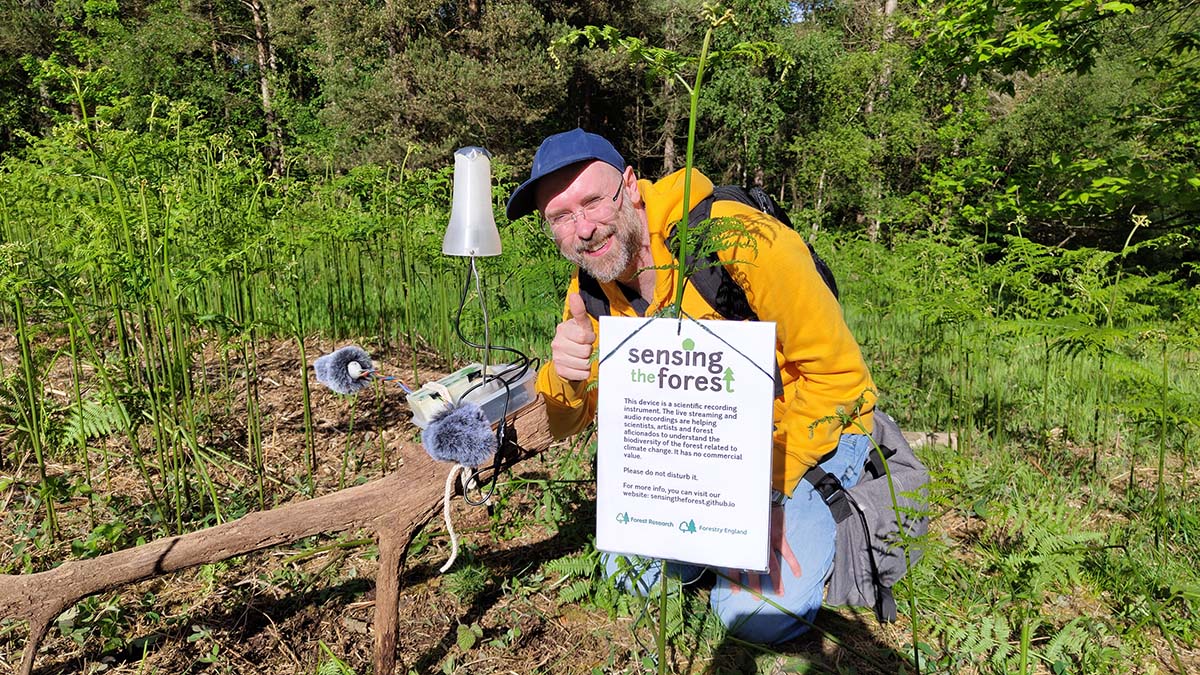Fourth Field Trip to Alice Holt Forest
Photo: Luigi Marino celebrating the double victory of finding internet and streaming successfully with Streamer I in the small meadow.
On Wednesday 15 May we returned to the Alice Holt Forest on our fourth field trip to test internet connectivity in three focal points and launch Streamer I for 1-2 days.
From Bentley Rail Station to Alice Holt Forest
In the Third Field Trip to Alice Holt Forest, I reported how doable the walk from Bentley train station to Alice Holt Forest is. This time, I noticed the same but a different path. The light, weather and atmosphere were totally different. On my way, I snooped through the forest to discover that there is an Arboretum that will be worth visiting another time. Moreover, a new discovery while walking was the following quote engraved on a wooden bench, which I thought reflects very well the Sensing the Forest project!
“Trees are your best antiques” Alexander Smith
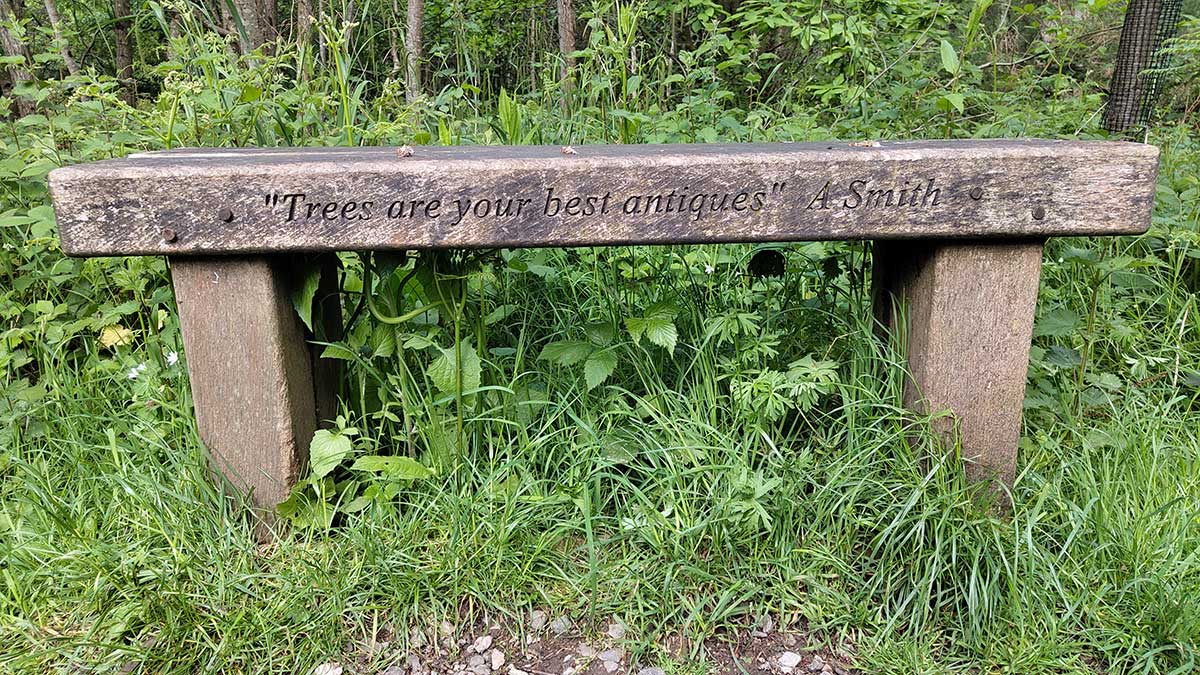
Kick-off meeting at the Alice Holt Café
We agreed to meet with Luigi and Mike at 11.00 at the Alice Holt Café. I previously met with Danielle, and we discussed how to coordinate the signposting of the streamer that we were planning to leave on the day, as well as the collection of the item after a couple of days based on our calculations of the life expectancy of the streamer’s battery.
Investigations about 4G
With the team, we discussed the common characteristics of 4G to optimise our search for the internet, the most prominent being that obstacles are not wanted for a good 4G signal: “Obstacles, such as tall buildings, mountains, thick walls, or even trees, can interfere with your cellular signal. These physical barriers can weaken the signal strength and make the overall network performance less efficient.” (source: 6 Ways to Improve a 4G Signal Indoors and Solve the Most Common Issues).
Other tips on how to boost mobile signal in rural areas include:
- Stand still.
- Change the way you are holding the phone (dongle).
- Charge your battery: Every time your phone attempts to connect to a mobile tower, it uses its battery. When your phone battery runs low, the quality will go down. Make sure you keep your phone at least 25% charged and have your charger on you. Ensuring that your device has a full battery will give you higher chances of boosting a mobile phone signal in rural areas. Once in production, this means we should change the battery before it reaches 25% of its load.
- Go higher.
- Find the closest mobile tower.
- Consider acquiring a signal booster.
In the search for Internet connectivity: our method

From the third field trip, we only tested Streamer I with an O2 SIM Card using a Huawei dongle that has, arguably, a weak antenna. It only worked in the small meadow, but it was unsuccessful in the large meadow and the Willows Green Trail.
In this field trip, Luigi was bringing Streamer I with the same dongle but with two additional antennas that can be plugged plus Streamer II with a more solid dongle (brand Waveshare).
Mike suggested that we try different SIM cards based on the network coverage of the area reported by the mobile data providers. According to these reports, for the major networks, using postcode GU10 4LS, O2, Three and Vodafone should work.
On this visit, we wanted to try systematically 4 different SIM cards (EE, O2, Three, Vodafone) in three focal points: the large meadow, Willows Green Trail, and the small meadow. The goal is that Streamer I goes to either the large meadow or small meadow to stream natural soundscapes, whereas Streamer II goes to the Willows Green Trail, where Pete’s multichannel sound installation will be.
As per the method:
- Check the internet coverage with our mobile phones and the 4 different SIM cards. If the signal (represented with bars) is half or above, then move to step 2. Else, skip this network.
- Try the successful networks installing the SIM cards on the streamer (Streamer I). Streamer II had a fixed Vodafone SIM card due to the new dongle requirements.
- Start streaming and listen to the streaming with the mobile phone (assuming the internet is available).
- Upon completion of inspecting the area, draw the results on the map (see below). We assigned a colour for each network and 3 possible status: strong coverage (filled circle), weak coverage (empty circle, and zero coverage (cross).
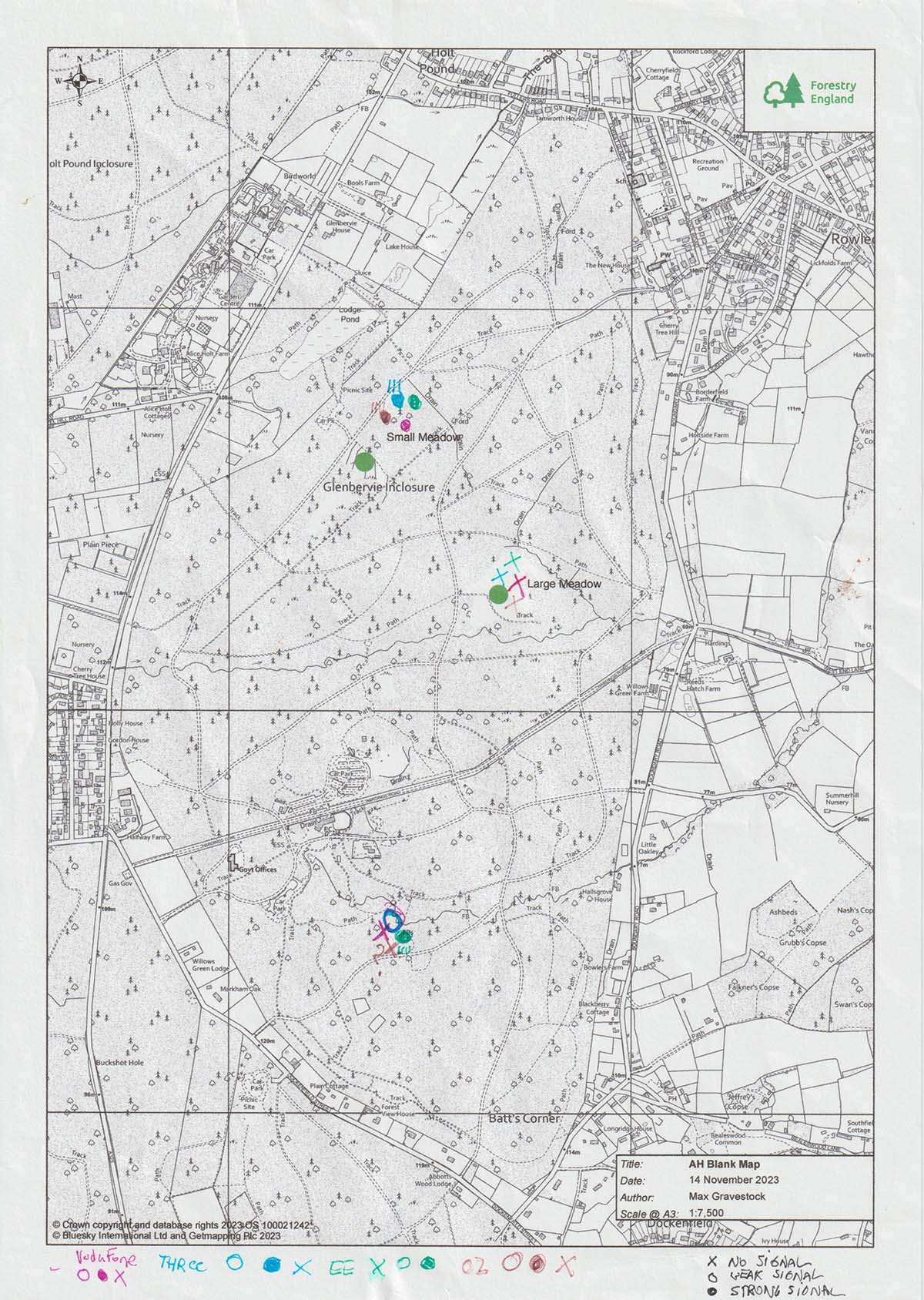
You can download our map.
I installed what3words app following Max’s recommendation and ’saved’ the locations of the two meadows and the Willows Green Trail. Thanks, Max for this important tip! On this trip, I learned that the world is divided into 3 metre squares with distinctive names using 3 words and that this can be shared to identify a particular location as well as to connect with the absolute coordinates (longitude and latitude).
Testing Streamer I in the large meadow
We arrived around 11.30 and tested the area for about 45-50 minutes. Luigi, Mike and I used 4 mobile phones with 4 different SIM cards already set in the mobile phones (‘a miracle’ in the words of Luigi), to sadly realise that the large meadow is a dark hole in terms of internet connectivity. Hence, this location was definitely discarded.
Meeting at the Visitors Centre and Lunch
Mike left us and we agreed that if time allows, we would meet later on the day to work on the data logger that we are also developing as part of the summer school.
At about 12.30, Luigi and I went to the Visitors Centre to attend an online meeting with Melanie, Susan, Hazel and Pete about the marketing of the summer school, which is approaching! After that, Luigi and I had lunch in the Alice Holt Café under the sun.
Testing Streamer I in the Willows Green Trail
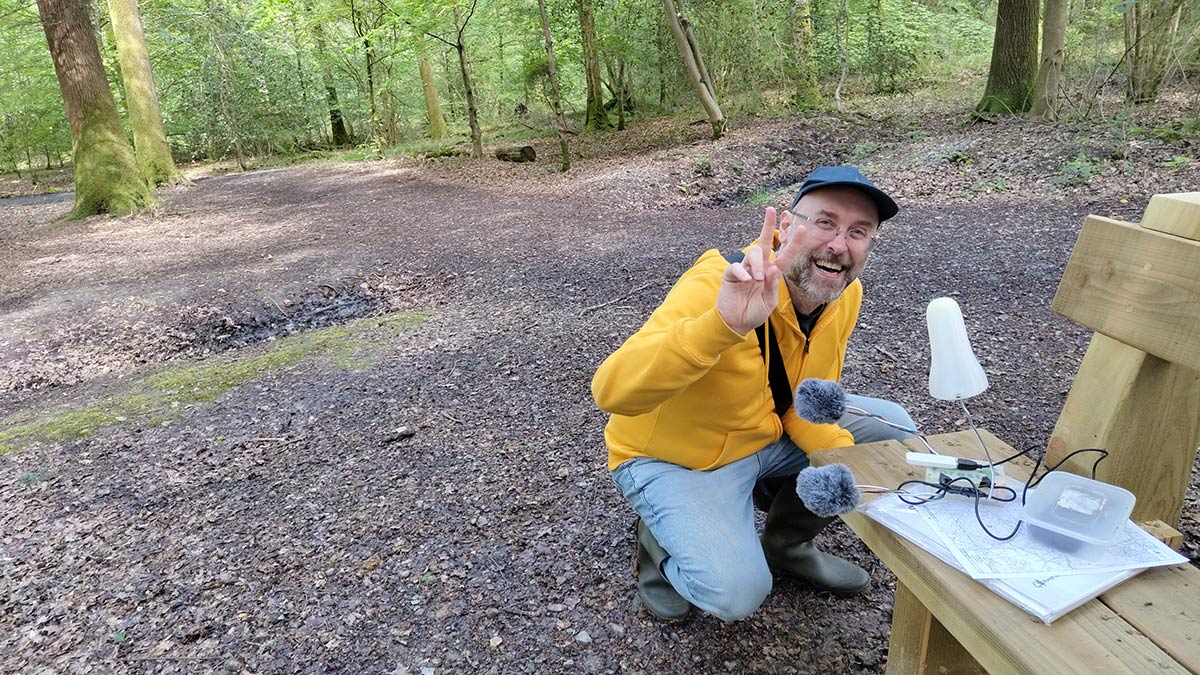
First, we had some difficulties in finding the spot, which we finally found thanks to our careful analysis of the map plus asking Pete to share with us a map with a clear marker of the location of his sound installation.
Then, we followed the same method as in the large meadow. Here, though, we were successful. Out of the four trails, EE was the only one that seemed to work with a strong signal. Three had a weak signal and EE and Vodafone did not work. We situated the streamer on top of a bench so that it could stand still and high. Moving forward, using a lectern or podium would be a potential solution to keep the same conditions more securely.
Testing & setting up Streamer I in the small meadow
Finally, we moved to the small meadow arriving at around 14.30-15.00 as our latest chance to get a suitable spot for the streamer. As shown in the map, we had good coverage for the four SIM cards, but the most stable and stronger was O2, which aligns with our early finding in the third field trip!
The first place we decided to position the streamer for the next two days was on a branch of a prominent chestnut.
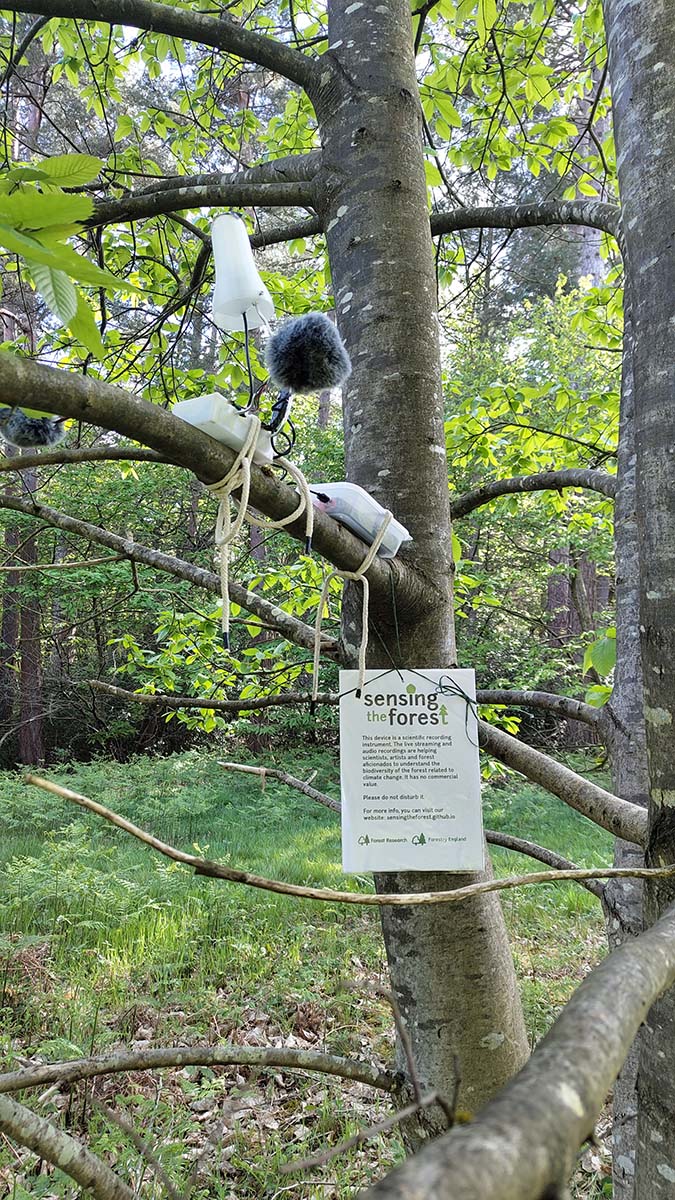
We tested the streaming for 10 minutes with our phones. However, the internet coverage was affected by potentially the obstacles of the branches and leaves.
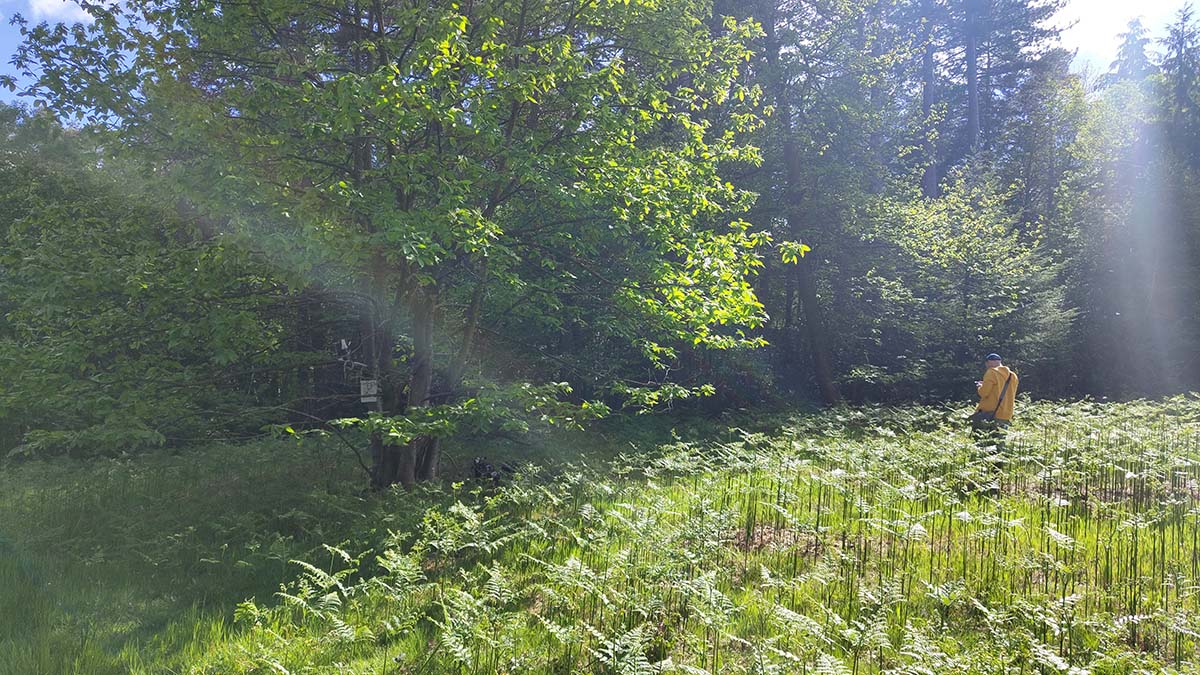
The second place was creating an ad-hoc structure with wooden sticks to elevate the streamer and optimise a better 4G reception. We tested the streaming for 10 minutes with our phones. This setup was successful.
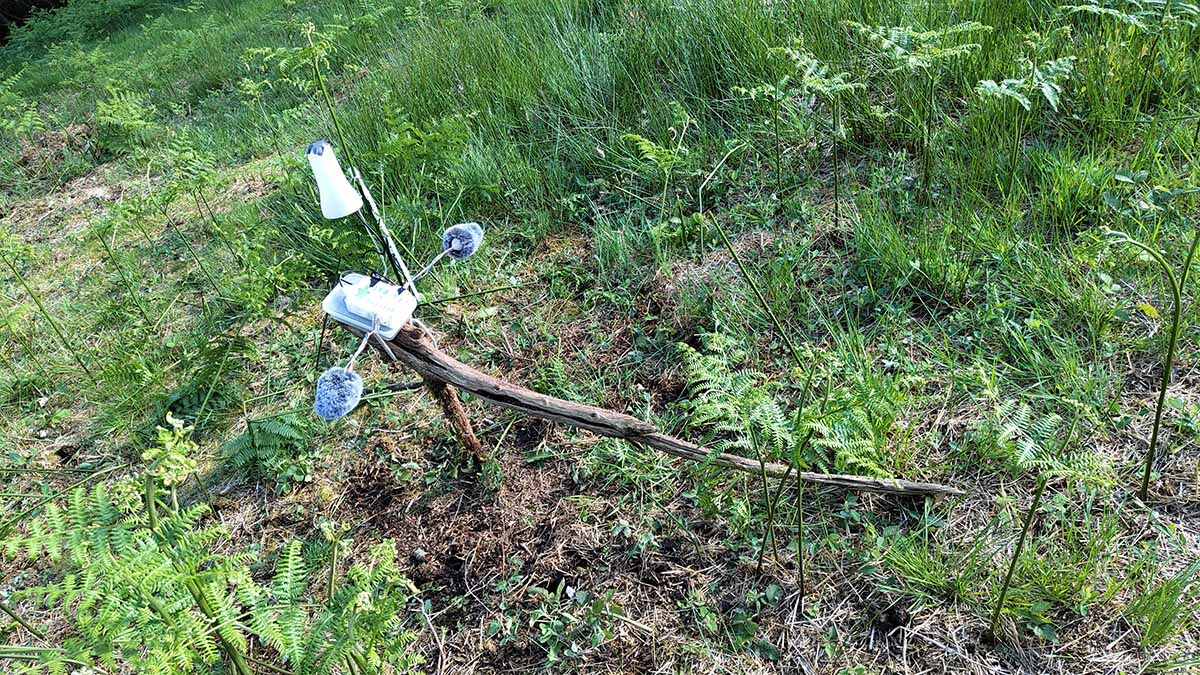
We added a sign gently attached to a nearby fern explaining what this device is about, which was designed inspired by the posters created by Forest Research and Forestry England. We finished after 17.00, so we called it a day.
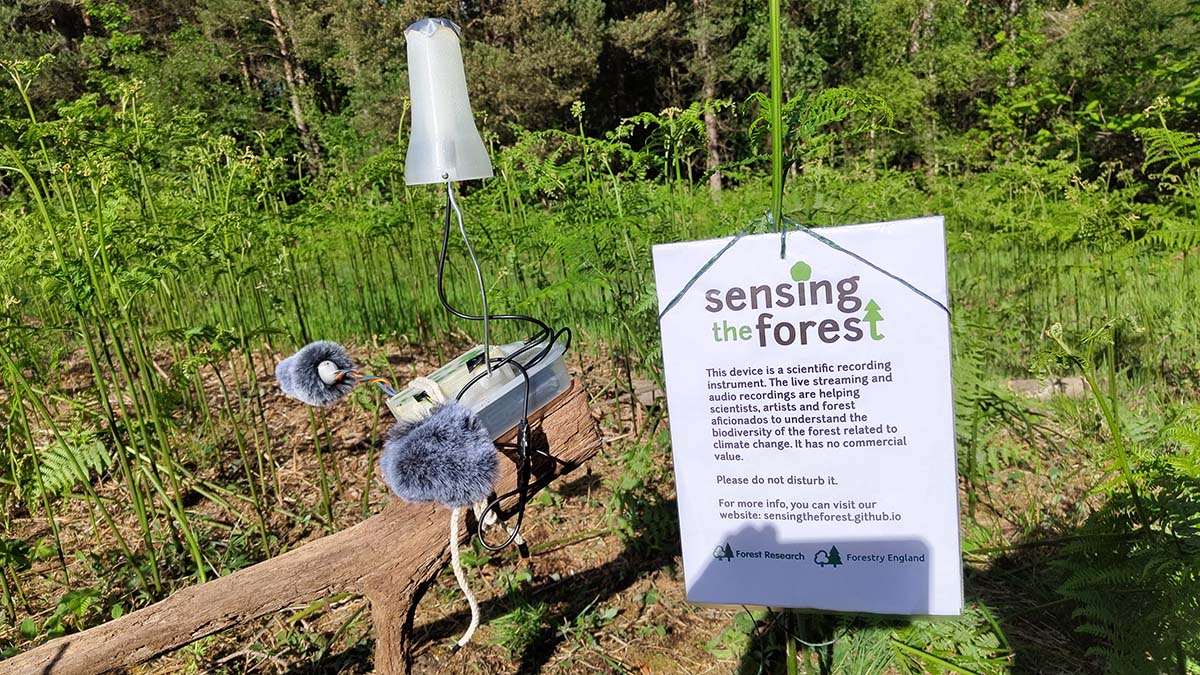
Results
In conclusion, as shown in the above map, we found that EE worked well in the Willows Green trail (elevated on a bench) and Vodafone, Three, EE and O2 worked equally well (some with more disruptions than others) in the small meadow, but especially O2, which is the one we decided to finally use, was working stable.
The streamer was able to stream for 13 hours. Then, the battery died out.
Closing and final discussions
We felt that this field trip was very productive. We achieved the goals from our previous visit: we investigated different SIM cards (02, Vodafone, Three and EE) systematically, as well as tried two different dongles. Besides, we placed a temporary sign near the streamer so that we inform visitors about the scientific purpose of the device. Also, we coordinated with the site management team (Danielle, Max and Jack) on how to collect it once it dies out.
The team was able to enjoy the streaming from the small meadow for a few hours. Hazel said: “Have just had a listen, sounds lovely at the moment”.
I could enjoy the immersive and stereophonic birds’ song from the train back to London for the entire trip back (which had unexpected severe delays). At night there were no sounds (which poses the question of whether a venue with a water stream would be more interesting) or more attention should be paid to the microscopic world.
Still, there is a lot of work to do. In our next field trip related to the streamers, we should explore a third dongle (that should be plug-and-play), increase the lifespan of the battery, swap the SIM card to a 1-year SIM card plan, add remote monitoring features, and try self-amalgamating tape recommended by Mike. Apart from that, we also will return to work on the data logger with Mike.
Overall, big kudos to Luigi for a great achievement and the team for their constant help and support so this has become a reality!
Special thanks to Mike, Danielle, Max, and Jack for their time, enthusiasm and help to make this field trip a success!
